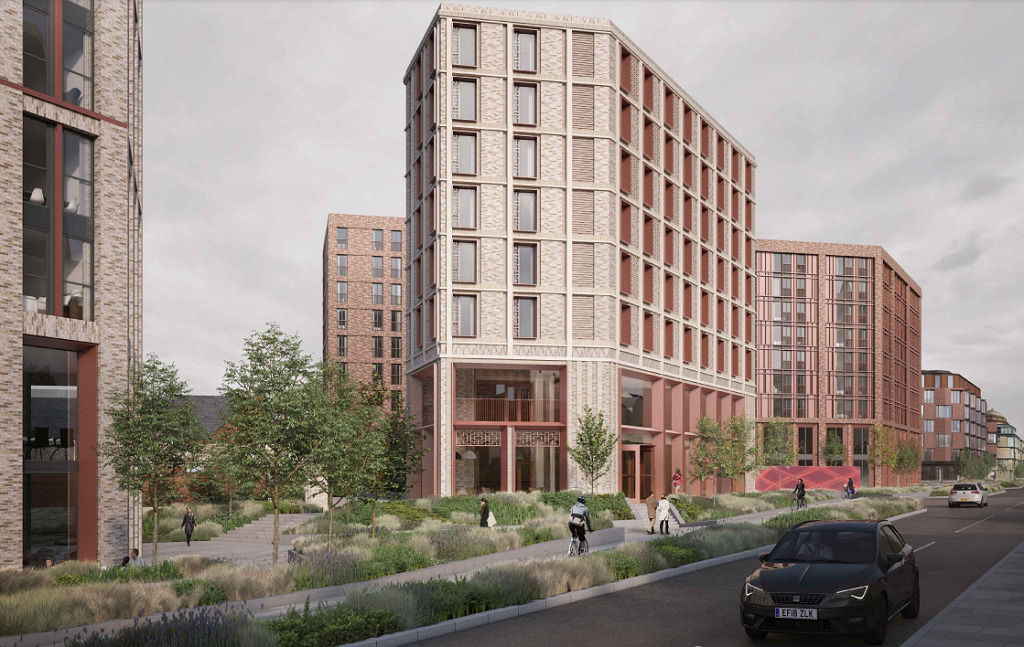NW in 2019 | Tipping point
Take a walk around Liverpool’s handsome centre and the tower crane count speaks for itself, writes Anna Bowes of Falconer Chester Hall. The city’s historic buildings are being refurbished at a clip whilst vacant lots are fast disappearing as a flurry of new-build schemes commence.
As of October there were 170 residential planning applications in the city centre, with a further 150 office and 280 retail/leisure schemes planned. Liverpool in 2019 looks to be set fair.
Draw a tighter line around the city’s historic business district – home to almost 70,000 workers – and you find office vacancy rates at a five-year low, with just 7.5% of the total stock available to rent.
And whilst that may be giving office agents reason to pause, behind it sits a quiet social and economic revolution that is transforming the look, feel, quality and function of this key part of Liverpool. The public is voting with its wallet, increasingly convinced that the city centre is the best place in which to live, work or study – and as it improves, so this movement is attracting more developers, employers and residents in its wake.
Since May 2013, when permitted development rights were introduced to allow the conversion of office buildings to residential without planning permission, more than 1.4m square feet of second hand office space has been converted to new homes in Liverpool’s CBD. Tired buildings from the 60s and 70s that had come to the end of their economic lives have been re-cast in to beautiful new spaces, with modern cladding and ground floors animated by retail and leisure occupiers. In a time of economic uncertainty, their investment has been a boon to Liverpool, driving its economy forward whilst rapidly improving its public realm and making the city more appealing to employers.
It’s the same with Liverpool’s stock of heritage buildings, which provide more scope for the creation of quirky new homes and ground floor commercial spaces and, in many instances, beautiful new hotels. I’ve worked on many of them and, whilst others worry about whether Liverpool is losing too much office stock, I see a wholly different picture: a city re-shaping its society, its economy and its physical fabric as it finds its place in the new economy. This, in turn, is attracting new types of business occupier to the city centre and the rising economy is boosting start-up rates to their highest levels in decades. As Liverpool has improved, so more people have wanted to be here and I suspect we’re reaching a tipping point where the momentum will be unstoppable.
The change from an altogether gloomier prospectus has been remarkably rapid which, of course, is what the Government intended. By letting developers off the planning leash it hoped to turbo-charge the provision of new homes and in a city as enterprising as Liverpool such a laissez faire stimulus was always going to be embraced. It’s opened opportunities for established Liverpool developers and attracted new ones to add a competitive pep to the market. And whilst a recent policy report by the RICS highlighted concerns at the quality of some conversions elsewhere in Britain, in Liverpool our clients have allowed us to match commercial awareness with creative flair and I’d happily live in any of the schemes which I have helped to design.
As for the loss of offices, this was space that was redundant anyway. If the demand is there then the market will respond. In the meantime, Liverpool needs new homes and their residents bring a buzz and a spending power which is transforming the city centre with each passing month.
On balance, permitted development rights have delivered a timely boost for Liverpool and its economy and the flurry of new openings and project starts slated for 2019 will help sustain the momentum.





Not surprising to hear such a company wax lyrical on the subject, but goes to show a spin can be put on just about anything.
No, much of this space was not already redundant. Of course we realise now what landlords were up to, however numerous buildings including the goliath (still largely unoccupied) Orleans House were in fact well occupied until their owners decided to empty them for conversion, rather than invest in bringing them up to scratch. Documentary evidence of this is not hard to find.
Some of these buildings are not even finished, despite many years having passed.
We then see the various net effects of retrenchment. A business resource and cafe turfed out of an office block because the landlord says they can get twice the rent from others. Not because Liverpool is a booming economy, but because firms have nothing to choose from. Not only has Liverpool’s core professional employment shrunk, but there is increasingly no room for the grade B occupiers either.
With no critical mass and no longer any obvious way of making critical mass, the city council still has to get involved to build grade A. Permitted development rights has hollowed out the city centre economy and all but guaranteed that big business will choose Manchester rather than Liverpool.
Even when/if the small amount of Grade A is built, who will come forward to donate the millions necessary to rebuild grade B from scratch?
For those that now have to do the sweaty commute to Manchester, all the types of buildings we’d been told modern employers don’t want and will never occupy are lit up with commercial activity. Some made over by firms who have made a packet from flogging Liverpool property off.
Has there been a dramatic increase in council tax receipts to support Anna’s claims?
The law Anna talks about has not been a boon for Liverpool, as the advertorial for permitted development rights suggests, only for the property owners and those who convert them. For your average person on the street facing a future recession (and subsequently even more commercial migration away to stronger economies), quite the opposite.
By Mike
The tipping point where Liverpool’s growth will become unstoppable will be reached as the latest public realm schemes come on board I’m convinced. The Victoria Street scheme will link Castle Street to St. George’s (with the quality of Castle Street) and The Strand boulevard will join all this to the Waterfront, with four bridges giving an amazing new route to the Albert Dock over historic Canning Dock. I can’t wait! The new Everyman cinema (on Victoria Street) is great with the remodelled Met Quarter starting to shape up as the Victoria Street dining terraces are completed.
By Roscoe
It is difficult to see how the planned pavement improvement works some of the downtown streets will have much of an effect on the economy although it will be nice to see some areas smartened up. The reduction in the capacity of the Strand (and hence the large and fairly recently constructed Liverpool ONE underground car park) for road traffic may have a net negative effect if done badly.
As noted by Mike in the comments above, the conversation of Liverpool’s remaining CBD office stock to often badly effected accommodation (hello Signature Living and their never ending conversion of Silkhouse Court) is hardly a positive development. Liverpool was not included in the list of major business cities allowed to exclude their office quarters from the 2013 relaxation in planning laws. Cities that did not, most visibly Manchester, have seen a boom in office development despite fluctuating economic circumstances in recent years. Jobs and workers have been draining out of Liverpool into Manchester as anyone who has to cram onto the crummy train service between the two cites can attest to.
It even isn’t as if there has been much of an downtown accommodation boom in Liverpool anyway in recent years anyway. For most of the last decade almost nothing had been built in the centre besides student flats. At the end of 2017, Cargo on the Strand was the first non-student new build constructed in the city centre since the 2008 downturn.
Look at Liverpool’s economic figures for the last decade and until the last year it was the worst performing core city and has only recently exceeded its pre-2009 GVA. After a very hopeful period of revival and growth up to 2008, the last decade has been very poor in comparison to both the period preceding it and cities that Liverpool might once have seen as its peers.
There are few bright spots. A notable one has been the almost spectacular improvement in its restaurant offer. Liverpool compares very well to all competitors now and does in fact better than some cities that are held up as being great successes over all.
All of this should not be a surprise. Since 2010 Liverpool has had a council leadership with no seeming intent even to develop its economy let alone having a clue about how to do it. Giant puppet shows and other events and stunts are much easier than even medium-term thinking about how the city can be a success. Even better they can be used immediately for reelection campaigns while something like Liverpool ONE in the last period of Liverpool’s growth took a. decade. Add to this and the plans to bypass HS2 and the rest of Westminster’s entirely Manchester-focussed Northern Powerhouse Project (all enthusiastically backed by City of Liverpool’s incomprehensibly counterproductive mayor) and it is hardly a surprise things have gone badly.
Now Colin Sinclair has been appointed and had such immediate success in the Knowledge Quarter, let us hope things are getting better. Because it is a criminal tragedy that Liverpool’s previous pre-2010 revival has been squandered and after the horrors of the 70s and 80s before our revival we have been reduced back to having yet another wasted decade.
By TFG